Global Finance’s annual evaluation of the work of the world’s central bankers found some stellar performances, and some dismal ones. The toughest challenge for many: propping up falling prices.

Back To Table Of Contents
WHATEVER HAPPENED TO INFLATION?
THE “A” LIST |
||
|---|---|---|
|
1. |
PARAGUAY |
Carlos Fernández Valdovinos |
|
2. |
PERU |
Julio Velarde Flores |
|
3. |
CZECH REPUBLIC |
Miroslav Singer |
|
4. |
EUROPEAN |
Mario Draghi |
|
5. |
INDIA |
Raghuram Rajan |
|
6. |
MALAYSIA |
Zeti Akhtar Aziz |
|
7. |
PHILIPPINES |
Amando Tetangco Jr. |
|
8. |
TAIWAN |
Perng Fai-nan |
|
9. |
ISRAEL |
Karnit Flug |
Generally speaking, monetary policy does not come in a one-size-fits-all model. Since the global financial crisis, however, central bankers in many countries have adopted a similar tack. They’ve stopped acting as inflation fighters. Instead, they’ve embraced unconventional policies to stave off deflation, which remains a persistent problem. And they’ve had to do this while wrestling with volatile swings in free-floating currency rates. Many countries, particularly those in emerging markets, have drifted toward flexible, but managed, exchange rate systems.
And while monetary policy is an inexact science, central bankers on the whole are getting better at their jobs. “Central banking as a profession has come a long way, striving to adapt itself to the challenges faced by economies over time,” says Stanley Fischer, vice chairman of the Federal Reserve and former governor of the Bank of Israel. “And both the practice and theory of central banking will continue to evolve.”
They’ll have to. Global markets are increasingly intertwined, which adds to the complexity of keeping economies on an even keel. The appreciation of the US dollar, for one, has kept central bankers in emerging markets on their toes. Cheaper exports are a good thing, pricier imports are not. And central bankers in developing countries have been holding their breath, anticipating what will happen when the US federal funds rate goes up.
The wild swings on global stock markets that commenced in late August put the Fed’s move on hold. But Fischer, speaking at a roundtable for African central bankers at the University of Oxford, noted that the eventual rise in the Fed’s overnight rate will likely trigger higher interest rates around the world. “The increase in global interest rates could cause investors to adjust their portfolios, triggering capital outflows from emerging market and developing economies,” he said.
That could well be the case in Asia. Many central banks in the region, including those of China and India, have cut interest rates this year and devalued their currencies to promote growth. Higher interest rates in emerging markets and developing nations will make those countries less attractive to asset managers. Fischer believes the US central bank is well aware of possible damage to other economies from its policy moves, however. “In an interconnected world,” he says, “fulfilling the Fed’s objectives requires that we pay close attention to how our own actions affect other countries, and how developments abroad, in turn, spill back into US economic conditions.”
Case in point: Many African nations were able to issue bonds in global markets in recent years—some for the first time ever. But higher interest rates could limit these countries’ ability to finance essential projects or fund budget deficits on favorable terms. The slump in commodities prices—and the surge in the US dollar—will make it more difficult. “The reduced ability of governments to finance their needs will likely increase the challenges faced by central banks in their efforts to assist the economic growth and development agendas of their national governments,” Fischer notes.
Typically, a central bank’s choice of monetary policy framework depends on the objectives it aims to achieve, on the challenges that an economy faces, and on the structure of the financial markets and the economy in which it operates, according to Fischer. In many developing countries, financial systems remain small and are not diversified. That hinders the ability of central banks to conduct open-market operations, he says. In these cases, changes in policy rates have a limited effect on the economy and other interest rates. Therefore, as developing countries seek to modernize their policy frameworks, Fischer explains, they must engage in a parallel effort to develop the market institutions needed to carry out monetary policy effectively.
Of course, every country faces a different economic situation. And every central bank has to take a wide range of factors into account when formulating policies aimed at remedying problems.
As our Central Banker Report Cards show, some central bankers are doing a better job than others at making the right moves. We assessed 74 governors on an A to F scale. Nine governors received an A. Three central bankers—all from Latin American countries—got a D. None of the 74 merited a failing grade.
Global Finance has published the report cards since 1994. The rating is based on, among other things, inflation control, economic growth, currency stability and interest-rate management, as well as the determination of central bankers to protect their independence in the face of political pressure.
NEXT PAGE: GRADES BY REGION
Back To Table Of Contents
GRADES BY REGION
Country |
Central Bank Governor |
Grade This Year |
Grade Last Year |
|---|
THE AMERICAS |
|||
|
Argentina |
Alejandro Vanoli |
D |
N/A* |
|
Bolivia |
Marcelo Zabalaga Estrada |
B+ |
B |
|
Brazil |
Alexandre Tombini |
B- |
B- |
|
Canada |
Stephen Poloz |
B- |
B |
|
Chile |
Rodrigo Vergara |
B+ |
A- |
|
Colombia |
José Darío Uribe Escobar |
A- |
A- |
|
Costa Rica |
Olivier Castro Pérez |
B |
B |
|
Ecuador |
Diego Martinez |
Too early to say |
B- |
|
Guatemala |
Julio Roberto Suárez |
D |
N/A* |
|
Mexico |
Agustín Carstens |
B+ |
B |
|
Paraguay |
Carlos Fernández Valdovinos |
A |
N/A** |
|
Peru |
Julio Velarde Flores |
A |
B+ |
|
United States |
Janet Yellen |
A- |
Too early to say |
|
Uruguay |
Mario Bergara |
B |
N/A* |
|
Venezuela |
Nelson Merentes |
D |
D |
EUROPE |
|||
|
Belarus |
Pavel Kallaur |
Too early to say |
N/A* |
|
Bulgaria |
Dimitar Radev |
Too early to say |
N/A* |
|
Czech Republic |
Miroslav Singer |
A |
B+ |
|
Denmark |
Lars Rohde |
B+ |
B+ |
|
European Union |
Mario Draghi |
A |
A- |
|
Hungary |
György Matolcsy |
B |
B- |
|
Iceland |
Már Guðmundsson |
B+ |
N/A** |
|
Norway |
Øystein Olsen |
B+ |
B- |
|
Poland |
Marek Belka |
B |
B- |
|
Romania |
Mugur Isărescu |
B |
B |
|
Russia |
Elvira Nabiullina |
B |
B |
|
Sweden |
Stefan Ingves |
B |
B+ |
|
Switzerland |
Thomas Jordan |
B+ |
A |
|
Turkey |
Erdem Başçı |
C |
B- |
|
Ukraine |
Valeria Gontareva |
C |
Too early to say |
|
United Kingdom |
Mark Carney |
B |
B- |
ASIA |
|||
|
Australia |
Glenn Stevens |
B |
B+ |
|
Azerbaijan |
Elman Rustamov |
C |
C |
|
Bangladesh |
Atiur Rahman |
B- |
C |
|
China |
Zhou Xiaochuan |
C |
B- |
|
Hong Kong |
Norman Chan |
B |
B |
|
India |
Raghuram Rajan |
A |
A |
|
Indonesia |
Agus Martowardojo |
B- |
B |
|
Japan |
Haruhiko Kuroda |
B |
B+ |
|
Kazakhstan |
Kairat Kelimbetov |
B- |
C |
|
Malaysia |
Zeti Akhtar Aziz |
A |
A |
|
New Zealand |
Graeme Wheeler |
B |
B |
|
Pakistan |
Ashraf Mahmood Wathra |
B- |
Too early to say |
|
Philippines |
Amando Tetangco Jr. |
A |
A |
|
Singapore |
Ravi Menon |
B- |
B |
|
South Korea |
Lee Ju-yeol |
B |
Too early to say |
|
Sri Lanka |
Arjuna Mahendran |
Too early to say |
N/A* |
|
Taiwan |
Perng Fai-nan |
A |
A |
|
Thailand |
Veerathai Santiprabhob |
Too early to say |
N/A* |
|
Uzbekistan |
Fayzulla Mullajanov |
C- |
D |
|
Vietnam |
Nguyen Van Binh |
B- |
B- |
MIDDLE EAST & AFRICA |
|
|
|
|
Algeria |
Mohammed Laksaci |
B |
B- |
|
Angola |
José Pedro de Morais |
Too early to say |
N/A* |
|
Bahrain |
Rasheed al-Maraj |
B- |
B- |
|
Botswana |
Linah Mohohlo |
B+ |
N/A** |
|
Egypt |
Hisham Ramez |
B |
B |
|
Ethiopia |
Teklewold Atnafu |
B+ |
B- |
|
Ghana |
Henry Kofi Wampah |
C |
C |
|
Iraq |
Abdul Basit Turki |
C |
B- |
|
Israel |
Karnit Flug |
A |
A |
|
Jordan |
Ziad Fariz |
B+ |
B |
|
Kenya |
Patrick Njoroge |
Too early to say |
N/A* |
|
Kuwait |
Mohammad Yusuf Al-Hashel |
B- |
B+ |
|
Lebanon |
Riad Salameh |
B+ |
B |
|
Morocco |
Abdellatif Jouahri |
B+ |
B |
|
Namibia |
Ipumbu Shiimi |
B |
N/A** |
|
Nigeria |
Godwin Emefiele |
C |
Too early to say |
|
Oman |
Hamood Sangour Al Zadjali |
B+ |
B |
|
Qatar |
Abdullah Saud Al-Thani |
B+ |
B |
|
Saudi Arabia |
Fahad al-Mubarak |
A- |
A |
|
South Africa |
Lesetja Kganyago |
B+ |
N/A* |
|
Tunisia |
Chedly Ayari |
B- |
B |
|
Uganda |
Emmanuel Tumusiime-Mutebile |
B |
N/A** |
|
United Arab Emirates |
Mubarak Rashid Al Mansouri |
B |
N/A* |
|
*CB governor was graded in 2014, however a different governor held the office. |
|||
NEXT PAGE: PROFILES BY REGION
Back To Table Of Contents
PROFILES BY REGION
The Americas | Europe | Asia-Pacific | Middle East & Africa
THE AMERICAS
ARGENTINA
Alejandro Vanoli | GRADE: D
Vanoli was appointed to halt the slide in the peso, but the currency continues to plunge. In late August, the black market exchange rate hit a record low of 16 per dollar; the official rate was 9.3. Nevertheless, Vanoli insists the currency is not overvalued. Instead, the central bank is using international reserves to defend the official rate. Market analysts predict a new government in December will pursue a devaluation and lift currency controls. The central bank has no autonomy, and Vanoli is believed to be defending the peso for political reasons. Meanwhile, private economists put the country’s annual inflation rate at close to 30%. At this point, it’s unclear which is dropping faster: the value of the peso or the credibility of the country’s central bank.
BOLIVIA
Marcelo Zabalaga Estrada | GRADE: B+
Despite lower energy prices, which are cutting into gas export revenues, the Bolivian economy remains strong. The central bank has worked to keep public debt levels under control, although the deficit is still on the rise. International reserves are growing, however. In fact, the reserve funds are among the highest in Latin America as a percentage of GDP. The strong economy has vindicated Zabalaga’s foreign exchange and monetary policies, which have, in turn, helped Bolivia shield itself from energy market price volatility. Fitch upgraded Bolivia to BB in August, citing strong fiscal and external balance sheets.
BRAZIL

Alexandre Tombini | GRADE: B-
Times are tough right now in Brazil. Nevertheless, Tombini insists the country’s GDP rate will go up in 2016 and the inflation rate will go down. Experts say he’s got it wrong on both scores. In a survey in August, local economists predicted a 0.24% GDP contraction and 5.5% rise in prices next year. Indeed, Brazil is bracing for recession. Investors contend Tombini was pressured by president Dilma Rousseff to slash interest rates to untenable levels during her first term, even as her administration continued to boost spending. In July the central bank boosted the benchmark Selic rate to a nine-year high to curb inflation.
CANADA

Stephen Poloz | GRADE: B-
Canada will be lucky to eke out even modest economic growth this year after slipping into recession in the first half of 2015. The Bank of Canada did its part to stimulate the economy by cutting its benchmark rate in January, and again in July. The Canadian dollar fell to its lowest level since 2009—the last time Canada was in recession—but the country’s export picture remains bleak. The drop in oil prices, the central bank’s dovish monetary policy and the uncertainty surrounding the October election have not improved the situation. The central bank’s economic forecasts have repeatedly proven to be overly optimistic.
CHILE
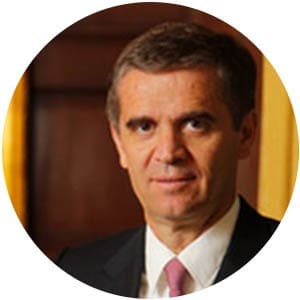
Rodrigo Vergara | GRADE: B+
Vergara’s cautious monetary stance has helped Chile contend with an economic slowdown that is expected to yield GDP growth of just 1.8% in 2015 and 1.9% in 2016. While expressing concerns about the current economic situation in China, the US interest rate outlook and weak growth among its Latin American neighbors, Vergara says Chile’s macroeconomics remain sound. The central bank began reducing interest rates ahead of the slowdown and expects to bring the inflation rate down to 3% next year. It’s currently above 4%.
COLOMBIA
José Darío Uribe Escobar | GRADE: A-
With nearly half of the country’s export revenues coming from petroleum sales, weaker oil prices have hit Colombia hard. In fact, the current-account deficit may reach 5.8% in 2015, the largest gap since 1980. Still, Uribe gets high marks for keeping the economy on track; the IMF predicts the GDP will still grow by 3.4% this year. The central banker has also kept inflation under control and effectively managed the fallout from the peso’s steep slippage. By avoiding the temptation to use interest rates to curb inflation, Uribe has helped Colombia steer clear of a recession—a real achievement given what’s going on in several other countries in Latin America.
COSTA RICA
Olivier Castro Pérez | GRADE: B
Costa Rica’s economic prospects remains mixed. Policymakers have been encouraged to continue slashing the official interest rate—which currently stands at a nine-year low—to stave off a deflationary spiral. Lower interest rates have not yet sparked the expected spurt in GDP growth. In fact, the central bank in July cut its 2015 expansion forecast from 3.4% to 2.8%. The government’s soaring fiscal deficits have led to several credit downgrades. Foreign direct investment, which fell in 2014, is expected to remain flat. Castro is working to keep the ship steady.
ECUADOR
Diego Martinez | Grade: Too Early To Say
It is too soon to grade Martinez—he took over as head of the central bank in August. But he is not a newcomer to the institution. Martinez, an economist, chaired the bank’s board of directors starting in 2003. He has also occupied other government posts, including undersecretary in the National Planning and Development Ministry. Martinez’s challenges include overseeing implementation of the government’s virtual currency, which was rolled out this year, making Ecuador the first country in the world with its own electronic legal tender.
GUATEMALA
Julio Roberto Suárez | Grade: D
In May, just seven months after being picked to lead Guatemala’s central bank, Suárez was arrested on charges of fraud. The central bank chief, who also sits on the board of the country’s Social Security Institute, allegedly took a kickback for helping a Mexican vendor win a $15.7 million government contract to supply dialysis services to 530 patients. The arrest came as Guatemalans also called for the impeachment of president Otto Pérez Molina, who resigned in Sepember as his administration was engulfed in a widening corruption scandal. Suárez, who was previously Guatemala’s representative to the IMF, received a vote of confidence from the monetary policy board.
MEXICO
Agustín Carstens | Grade: B+
While Mexico continues to take its cues from the US Federal Reserve, Carstens has shown independence in reacting to a weakening peso and potential inflationary spike. The central bank is selling dollars to support the currency, but Carstens says he will not depend exclusively on foreign exchange interventions. Carstens served as secretary of Finance from 2006 to 2009 and took bold steps to reinvigorate Mexico’s then-flagging economy. As the governor of the Bank of Mexico, he faces some stiff challenges, including weak oil prices and president Enrique Peña Nieto’s dwindling popularity. GDP in Mexico is expected to grow 1.7% to 2.5% this year.
PARAGUAY
Carlos Fernández Valdovinos | Grade: A
Fernández, who has headed the central bank since 2013, is a key member of Paraguay’s economic team, which has turned the nation’s economy into one of the region’s star performers. Despite weakened economies in neighboring Brazil and Argentina—the two largest markets in the Mercosur trading bloc—Paraguay is poised for 4% growth this year. That’s an accomplishment, considering the central bank boss has kept the reins on inflation. The rise in consumer prices remains within the central bank’s 4.5% medium-term target. Fernández is eyeing the potential impact of global currency volatility.
PERU
Julio Velarde Flores | Grade: A
Velarde’s prudent—and often countercyclical—policies have paid off. Peru boasts the region’s lowest inflation rate (4%), while posting one of Latin America’s highest GDP growth rates (around 3% this year). Although often breaking through the 1% to 3% official inflation target, the central bank has kept CPI close to the band. The central bank recently tightened forex controls and increased dollar sales to curb the depreciation of the nuevo sol. Velarde continues to act decisively to face domestic and global risks.
UNITED STATES
Janet Yellen | GRADE: A-
Janet Yellen finessed the difficult task of bringing quantitative easing to an end and preparing the markets for the Federal Reserve’s gradual tightening of monetary policy. The data-driven Fed has overseen a steady decline in the US unemployment rate without becoming overly concerned about a potential flare-up of inflation. Yellen, the first female to head the Fed, has kept a steady hand on the monetary tiller. She likely will be a strong defender of the Fed’s inflation target when the time comes to dampen expectations of rising prices. Meanwhile, the Fed head will undoubtedly act with caution and with a clear aim to meet the Federal Reserve’s long-term goals of maximum employment and 2% inflation.
URUGUAY
Mario Bergara | Grade: B
Uruguay’s central bank gets high marks from local leaders based on its credibility and for implementing policies that support the financial system’s ongoing stability. Bergara argues that the country’s economy is strong enough to tackle regional and global challenges, including GDP weakness in neighboring Brazil and Argentina, a strengthening US dollar and the recent Chinese renminbi devaluation. Inflation, however, remains the bank’s chief concern. The annual rate is hovering near 9%, versus the official 4% to 6% target.
VENEZUELA
Nelson Merentes | Grade: D
The central bank ceased publishing economic data in late 2014, sparking speculation about the full extent of the country’s economic tailspin. In December the government put the inflation rate at 68%. The figure may now be closer to 100%. Barclays predicts the CPI will rise to 200% by year-end. The government has tried to ease the crisis by imposing price controls on basic goods. But widespread shortages—and a 90% depreciation of the bolívar on the black market—are not encouraging signs. With more than 90% of Venezuela’s export revenues generated by oil, the picture is not pretty.
BELARUS
Pavel Kallaur | Grade: Too early to say
Kallaur was appointed chairman of the board of the National Bank of the Republic of Belarus in December. About three months later, an IMF mission to the country stressed the need for the central bank to follow through on measures to move toward a more flexible exchange-rate regime and to tighten monetary policy. The Fund also wants the bank to fully implement a money-targeting framework to bring inflation back to single digits. That won’t be easy. In 2014 the inflation rate nearly hit 18%. The World Bank projects negative growth for Belarus this year. The Belarusan ruble has fallen by approximately 40% against the US dollar, and according to the World Bank, currency pressures persist because of the country’s low level of reserves.
BULGARIA
Dimitar Radev | Grade: Too early to say
Radev, a senior economist at the International Monetary Fund, was appointed as new governor of the Bulgarian National Bank in July. His predecessor, Ivan Iskrov, reportedly resigned over the handling of Corporate Commercial Bank. The financial institution was taken under central bank supervision after an audit found irregularities in its operations. The bank’s management was eventually accused of operating a Ponzi scheme, and its chairman fled the country. It’s no surprise, then, that one of the first things Radev told reporters following his appointment was that he would focus on bank supervision, crisis management and asset quality in order to restore confidence in the domestic financial system. Following the failure of Corporate Commercial Bank, liquidity measures were introduced by the central bank, which helped avert a run on domestic banks by depositors. Radev’s ability to support a strong, independent and accountable Bulgarian central bank will be critical, says the IMF.
CZECH REPUBLIC
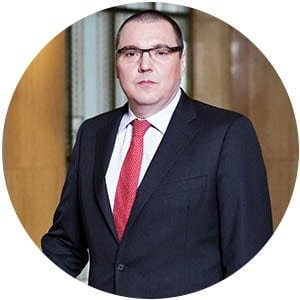
Miroslav Singer | Grade: A
Singer is not the only central bank governor who has resorted to unconventional monetary policies in the past few years to deal with external shocks. But he has been one of the more successful at avoiding deflation. The Czech National Bank boss realized early on that conventional monetary policy instruments—such as long-term interest rates—needed to be supplemented with an increased focus on exchange rates to keep inflation within the central bank’s 2% target range. Singer identifies the weakening of the koruna as one of the keys in the Republic’s economic turnaround. He says he can now see “the light at the end of the tunnel.” It’s not an oncoming train, either.
DENMARK
Lars Rohde | Grade: B+
The Danish krone’s newfound safe-haven status has put Rohde through the ringer. To stem capital outflows, he’s had to intervene over the past 12 months in foreign exchange markets and bring interest rates on certificates of deposit into negative territory. Rohde’s willingness to wade into the FX markets appears to have paid off: The exchange rate for the krone has remained relatively stable. The Danmarks Nationalbank anticipates that the country’s GDP growth rate will rise to about 2% this year.
EUROPEAN CENTRAL BANK
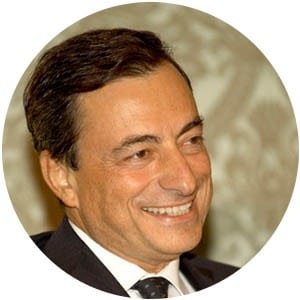
Mario Draghi | Grade: A
Draghi has proven that he is able to deliver the goods under pressure. Although he was slow to introduce quantitative easing across the eurozone, the ECB did respond quickly to the latest crisis in Greece, extending emergency funds to keep Greek banks afloat. The ECB’s actions contained the problem, preventing the crisis from spreading to the rest of Europe. Draghi’s bond-buying program—and his statement that he would do whatever it takes to defend the single currency—continue to resonate as Europe dips in and out of crisis. Draghi has demonstrated that he is ready to use, albeit reluctantly at times, all instruments at his disposal to defend the euro.
HUNGARY
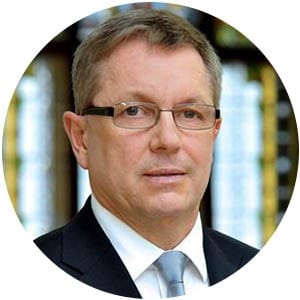
György Matolcsy | Grade: B
While other Eastern European countries have eased off on interest rate cuts, moderate levels of inflation and a desire to boost economic growth have seen the Central Bank of Hungary take a different tack. Indeed, the bank has continued to chip away at deposit rates, which were cut by 15 basis points to 1.35% in July. The economic recovery in the country is still protracted, though. By maintaining a relatively loose monetary policy, Matolcsy hopes not only to keep inflation within the target range but also to provide the necessary support for sustainable growth. Further easing of rates seems unlikely in the short term, but the central bank has given itself enough room to maneuver if it needs to take further action.
ICELAND
Már Guðmundsson | Grade: B+
Iceland’s central bank governor knows all about crisis management. In 2008 the Icelandic economy went into a meltdown as banks collapsed under the weight of huge debt loads. The country’s economy appears to have turned a corner, though, with 4% GDP growth predicted for this year. But Guðmundsson knows his job is not done yet. To stem growing inflationary pressures from wage increases, the bank’s monetary policy committee upped its benchmark rate by 0.5 percentage points to 5.25% in June, then to 6.25% in August. Intervention in the FX markets has also prevented the exchange rate for the króna from rising on the back of increased capital inflows. But Guðmundsson’s biggest challenge may be what to do about the capital controls that were put in place in response to the 2008 crisis. The central bank has been toying with the idea of lifting controls for some time in order to encourage economic growth, but a deal with the foreign creditors of collapsed Icelandic banks has still not been finalized.
NORWAY
Øystein Olsen | Grade: B+
Olsen responded swiftly to the decline in oil prices last December by cutting the key policy rate to 1.25% to counter the negative impact on the country’s growth outlook. In June the bank cut the rate by another 25 basis points to 1% in response to higher unemployment and a deteriorating economic outlook. Olsen hinted that he might make further cuts to the base rate in autumn. He may have to. Norway’s economy remains in slow-growth mode, owing to low oil prices—a problem that doesn’t seem likely to go away anytime soon.
POLAND
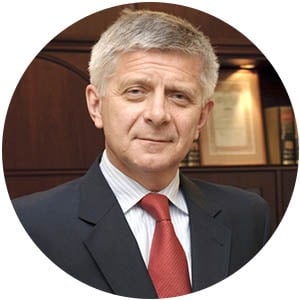
Marek Belka | Grade: B
Last year’s grade for Belka (B-) was overshadowed by allegations about the central bank’s independence from the government. Those allegations came after a Polish magazine released a secret recording of the central bank governor purportedly discussing the removal of the country’s Finance minister. Belka’s six-year term as governor is due to end next June. These days, he appears to be spending more time defending Polish banks—which withstood the global financial crisis without having to be propped up—against the threat of increased bank levies. With inflationary pressures expected to remain low, the bank kept its reference rate of 1.50% unchanged at its July monetary policy council meeting.
ROMANIA
Mugur Isărescu | Grade B
Isărescu is one of the longest-serving central bank governors, having headed the National Bank of Romania since 1990. With inflation at –1.67%, well below the bank’s 2.5% target, Isărescu responded by lowering the monetary policy rate by another 0.25 percentage points in May before maintaining the key rate at a historical low of 1.75% in July. The cuts, along with a reduction in minimum reserve requirements, appear to have had the desired effect, boosting household and corporate lending. In a March 2015 report, the IMF recommended that the central bank move toward a fully-fledged inflation-targeting regime while still leaving room for further monetary policy easing in light of deflationary pressures.
RUSSIA
Elvira Nabiullina | Grade: B
Nabiullina has had her work cut out for her since becoming the first woman in a G8 country to head a central bank. She has had to weather the impact of Western sanctions against Russia for the country’s incursions into eastern Ukraine. So far, she has managed to limit the damage—particularly on the depreciating ruble, which has also been hit by falling oil prices. Unlike her Western counterparts, who have resorted to quantitative easing to revive growth in their economies, Nabiullina is relying on interest rates to do the trick. She has continued to reduce the bank’s benchmark rate, which at July stood at 11.0%. Further cuts are anticipated as long as inflationary pressures remain in check. Internal pressures on prices are unlikely to be an immediate threat, given the slackening in domestic demand.
SWEDEN

Stefan Ingves | Grade: B
Ingves has indicated that monetary policy remains flexible in case unexpected inflationary pressures arise. After a long period of low prices in Sweden, however, the rate of inflation is expected to return to the bank’s stated 2% target next year. The rate as of September 1 stood at –0.1%. Like his counterparts in Switzerland and Denmark, Ingves has had to manage inflation amid the flood of money pouring into the eurozone as a result of the European Central Bank’s quantitative easing program. But so far, the Sveriges Riksbank appears to be doing everything it can to ensure that prices remain on an upward trajectory, cutting the repo rate by 0.10 percentage points to –0.35% at its July meeting. Bank authorities believe they have enough room to maneuver, if needed, in terms both of rates and of further extensions of the government’s bond-buying program.
SWITZERLAND
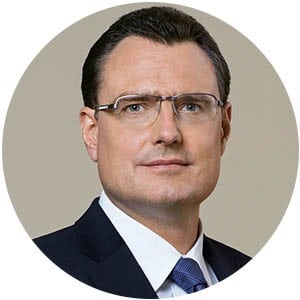
Thomas Jordan | Grade B+
Since becoming chairman of the Swiss National Bank, Jordan has been forced to resort to extraordinary measures to defend the franc against strong capital inflows. The central bank initially defended the currency floor of SFr1.20 per euro, but fluctuating market conditions both at home and abroad forced Jordan to abandon the minimum exchange rate. The Swiss franc still remains overvalued. But Jordan is now using interest rates, which are in negative territory, to contain upward pressure on the currency’s value. Inflation is expected to remain in negative territory until 2017. Jordan and the bank, however, believe it is merely part of an adjustment following the removal of the exchange rate floor, rather than a longer-term deflationary spiral.
TURKEY
Erdem Başçi | Grade: C
Leading up to Turkish elections in June, doubts surfaced about Başçi’s independence from Recep Tayyip Erdoğan’s AKP government. Erdoğan tried to influence the central bank to implement rate cuts to reduce the cost of borrowing. But after the AKP Party failed to secure a parliamentary majority in the vote, Başçi appears to be reasserting himself. In a welcome move, the Turkish central bank is looking at simplifying its unconventional monetary policy, which has used an interest rate corridor and reserves to contain financial risks and instability from capital inflows. Eventually, the one-week repo rate is expected to be the true indicator of the central bank’s main monetary policy stance. Başçi has maintained the bank’s tight liquidity policy to try to manage inflation, which in July stood at 6.8%—the lowest level in 14 months.
UKRAINE
Valeria Gontareva | Grade: C
The appointment in July, 2014 of former investment banker Valeria Gontareva as central bank governor was welcomed by foreign investors. Gontareva hasn’t wasted any time in trying to revive the country’s economic and banking problems, but it is perhaps too early to tell how she’ll ultimately tackle the problems. Gontareva has already hinted at easing monetary policy if inflation continues to decelerate. She’s also pointed to signs of a gradual economic recovery. But she has a long road ahead of her before her policies take hold. The bank is now focused on growing its reserves and implementing an inflation-targeting regime. Changes to the banking sector are also in Gontareva’s sights with her drafting of a “Strategy for Reforming the Banking System of Ukraine—2020.”
UNITED KINGDOM
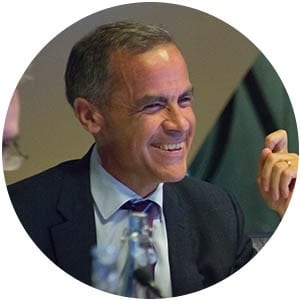
Mark Carney | Grade: B
Great expectations surrounded the appointment of Carney to the Bank of England governorship. As the first outsider to be appointed to the role—and given his track record in containing the effects of the global financial crisis on the Canadian financial system—Carney was viewed as somewhat of a miracle worker. But he still seems to be finding his feet at the Bank of England. While Carney has ushered in a new era of transparency for monetary policy decisions, he may be overdoing it. Hinting this summer about a possible rate rise, Carney may have jumped the gun, given the crisis in Greece and the global impact of a slowing Chinese economy. At the moment, Carney appears to be a spectator to economic events taking place around him, with little opportunity so far to exert any real influence on the outcome.
AUSTRALIA

Glenn Stevens | GRADE: B
After keeping rates unchanged for 18 months, the Reserve Bank of Australia pushed the cash rate deeper into record-low territory, with quarter-percentage-point cuts in February and May. Falling commodities prices and a strong currency at the time argued in favor of lower rates to stimulate economic growth. The central bank has a tricky task in balancing a high unemployment rate against a booming housing market, however. Inflation has been held within the RBA’s 2% to 3% inflation target. The economy depends heavily on demand from China for Australia’s natural resources. A potential hard landing in the People’s Republic would sorely test Stevens’ abilities.
AZERBAIJAN
Elman Rustamov | GRADE: C
Elman Rustamov was reappointed in April as chairman of Azerbaijan’s central bank, a position he has held since 1995. In February, the monetary authority abandoned the peg between the country’s currency, the manat, and the dollar. It now targets the manat to a basket of dollars and euros. Oil and gas account for about 95% of Azerbaijan’s exports and 75% of the government’s revenues. The slumping price of oil and spillover effects from Russia’s economic downturn have restrained growth, prompting the central bank to cut its refinancing rate by 50 basis points to 3% in July. The country’s underdeveloped financial sector is made up primarily of state-owned institutions, and access to credit is difficult for small and medium-size enterprises—not exactly ideal for promoting long-term growth.
BANGLADESH
Atiur Rahman | GRADE: B-
Despite nationwide strikes, or hartals, early this year, Bangladesh has managed to maintain a real GDP growth rate above 6%. Bangladesh Bank governor Atiur Rahman instructed financial institutions to lower interest rates on loans after the government cut rates on national savings certificates, which are backed by the state. As political tensions eased, garment exports recovered, while remittances from overseas workers continued to grow. The country’s economic fundamentals appear to be improving, with moderate inflation and rising foreign currency reserves. Nonperforming loans remain a problem, however, particularly at government banks.
CHINA
Zhou Xiaochuan | GRADE: C
The dramatic slowdown in China’s economic growth has sent shock waves through global financial markets this year. The country’s central bank has attempted to limit the damage. It has lowered interest rates and reserve requirements and devalued the renminbi—a controversial move that has sparked concerns about a possible currency war. It also introduced a new monetary policy tool, the pledged supplementary lending facility, to allow it to acquire local government debt. The monetary easing was also designed to halt a disastrous plunge in prices on local stock exchanges and to replace capital that left China. It hasn’t been particularly successful. Amid the volatility, the government is pressing ahead with efforts to liberalize China’s financial markets.
HONG KONG
Norman Chan | GRADE: B
The Hong Kong Monetary Authority intervened heavily in April to defend the local currency’s peg to the dollar. The de facto central bank bought nearly $7 billion to stop a rise in the Hong Kong dollar after China made it easier for mainland funds to purchase Hong Kong stocks. The HKMA remains committed to keeping the local currency in a range of HK$7.75 to HK$7.85 to the US dollar. Real GDP grew 2.5% in 2014, but growth slowed this year, owing to weak exports and slower growth in tourist arrivals. Although trade and financial services are key sectors of the economy, the government is encouraging technology start-ups and creative industries, such as film production.
INDIA
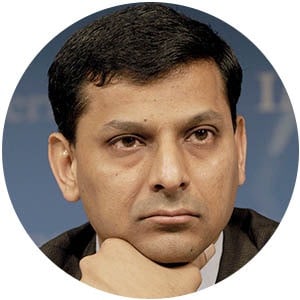
Raghuram Rajan | GRADE: A
India’s economy was blessed this year with a good monsoon and falling oil prices, which helped to bring down the current-account deficit. The rupee has remained relatively steady in the face of steep declines in other emerging markets currencies. By all rights, Reserve Bank of India governor Raghuram Rajan could take some of the credit for the rupee’s performance. However, he says the “economic recovery is still a work in progress.” Rajan fought successfully to protect the RBI’s independence when the government sought control of the monetary policy committee. At the same time, he delivered a series of rate cuts that boosted real GDP growth to 7.5% in the first quarter, surpassing that of China.
INDONESIA
Agus Martowardojo | GRADE: B-
Bank Indonesia unexpectedly cut its policy rate by a quarter point to 7.5% in February, as officials expected inflation to continue easing. Instead, inflation rose and economic growth slowed. With the rupiah sinking to a 17-year low in July, the central bank prohibited foreign currencies from being used in domestic transactions. President Joko Widodo, who took office last October, responded to weak commodity export prices by seeking to transform the economy through industrialization. He says he needs more time to accomplish his goal. Meanwhile, the World Bank in July lowered its 2015 real GDP growth forecast for Indonesia to 4.7% from 5.2%.
JAPAN
Haruhiko Kuroda | GRADE: B
After two decades of fighting deflation, the Bank of Japan has once again failed to meet its 2% inflation target. Governor Kuroda remains optimistic that the BOJ will hit the target in the fiscal year beginning in April 2016, but that is unlikely to happen without additional monetary easing. The central bank in July lowered its GDP growth forecast to 1.7% for the current fiscal year to March 2016—but failed to offer any new economic stimulus. The weak yen has sparked a pickup in exports, but consumer spending has declined following last year’s sales tax increase. The country’s economy may gradually gain momentum if wages rise, but it is difficult to rely on the BOJ’s forecasts, which have routinely missed the mark.
KAZAKHSTAN
Kairat Kelimbetov | GRADE: B-
Kazakhstan’s economy, the largest in Central Asia, has taken a one-two punch from falling oil prices and declining trade with Russia, its largest trading partner. The central bank widened the trading band of the country’s tenge currency against the dollar in July, instead of opting for a snap devaluation. It was under pressure to let the tenge weaken after the Russian ruble fell 46% last year. Governor Kelimbetov says the National Bank would like the tenge to float freely in the medium term. Growth in real GDP is likely to slow to about 1.5% to 2% this year, from 4.3% in 2014. The slump in the country’s economy has forced the government to postpone many infrastructure projects.
MALAYSIA
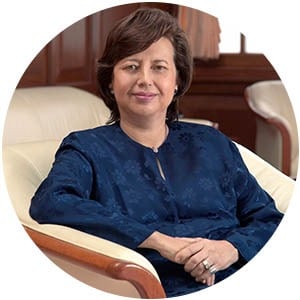
Zeti Akhtar Aziz | GRADE: A
Governor Zeti, whose current five-year term ends next year, is fighting to defend the central bank’s independence. Prime minister Najib Razak has been ensnared in a scandal over billions of dollars that are purportedly missing from a sovereign wealth fund. Not surprisingly, the alleged wrongdoing has roiled the country’s financial markets. Nevertheless, real GDP growth has remained resilient. Bank Negara Malaysia left its overnight policy rate unchanged at 3.25% at its July meeting, amid a steep decline in the ringgit. Officials said monetary policy is accommodative and will continue to support economic growth. A 6% goods and services tax came into effect in April and brought a short-term rise in headline inflation, but underlying inflation remained constrained. The decline in energy prices will lower Malaysia’s export revenue, but oil and gas constitute only 14% of the country’s exports.
NEW ZEALAND
Graeme Wheeler | GRADE: B
After raising interest rates repeatedly in 2014, the Reserve Bank of New Zealand changed course and lowered rates in June and July, as prices for its dairy exports continued to weaken. The country earns more than $10 billion a year, or one-third of its export sales, from the dairy industry. Real GDP growth has slowed to around 2.5%, and inflation is below the central bank’s 1%-to-3% target range. New Zealand is tackling its overheated housing market with restrictions on loans and a new capital gains tax on foreign investors. The cut in the official cash rate in June—a quarter point—was the first rate reduction in more than four years.
PAKISTAN
Ashraf Mahmood Wathra | GRADE: B-
Despite a shortage of electricity and a Taliban insurgency, Pakistan’s real GDP is continuing to grow at a rate of around 4%. The central bank cut its benchmark interest rate by a full point in May and a half point in July to 6.5%, the lowest in 42 years. It said the cuts were designed to stimulate economic growth at a time of slowing inflation, owing mainly to weak oil prices. The State Bank of Pakistan says it expects inflation to remain low. Overcoming persistent electricity outages and improving security are the keys to attracting investment and enabling sustained economic growth, the central bank says.
PHILIPPINES
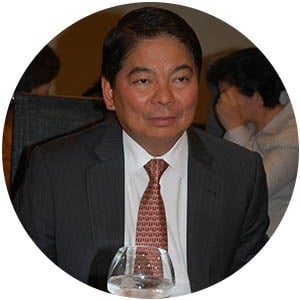
Amando Tetangco Jr. | GRADE: A
Amando Tetangco has kept a steady grip on the monetary reins, while the economy of the Philippines has galloped ahead, and with declining oil prices, inflation has remained below the central bank’s 2%-to-4% target range. At a time when many other emerging markets central banks provided monetary stimuli, Tetangco decided that domestic demand was strong enough to maintain the economy’s momentum. Liquidity is ample and higher public spending will support additional growth, he says. At its June meeting, the central bank kept the rate it pays lenders for overnight deposits at 4%, and the rate for special deposit accounts at 2.5%.
SINGAPORE
Ravi Menon | GRADE: B-
Singapore’s economy slowed abruptly in the second quarter, registering an annual real GDP growth rate of 1.7%. The weaker-than-expected performance could prompt an easing of monetary policy in October. The Monetary Authority of Singapore usually releases policy statements twice a year, in April and October. The MAS made an exception in January, however, when it loosened its grip somewhat and reduced the slope of the trading band for the Singapore dollar. The de facto central bank uses the exchange rate as its main monetary policy tool. The currency is pegged to a basket of currencies of Singapore’s main trading partners.
SOUTH KOREA
Lee Ju-yeol | GRADE: B
The Bank of Korea cut its base rate by a quarter point in March and another quarter point in June, to a record low 1.5%. The monetary policy committee cited sluggish exports and weak domestic consumption following a deadly outbreak of Middle East Respiratory Syndrome (MERS) as reasons for the rate cuts. In July the government declared an end to the MERS outbreak, which claimed 36 lives and hit the retail and tourism industries. Officials in Seoul announced a $20 billion fiscal stimulus package to support businesses affected by the crisis. South Korea posted a record current-account surplus in the first half of 2015, despite falling exports, as lower oil prices cut its energy import bill.
SRI LANKA
Arjuna Mahendran | GRADE: Too early to say
Arjuna Mahendran was appointed central bank governor in January by Sri Lanka’s newly elected president, Maithripala Sirisena. The central bank cut its benchmark rate by a half point to 6% in April. It said it expected GDP growth to slow to 7% this year from 7.4% in 2014. The Sri Lankan rupee fell to a record low in June. But Mahendran, a former chief investment officer at the wealth management arm of Dubai-based Emirates NBD, said the country should let market forces determine the exchange rate. The central bank kept its benchmark rate unchanged at its June and July meetings, after Sirisena called for early parliamentary elections.
TAIWAN
Perng Fai-nan | GRADE: A
Taiwan’s economy is expected to outperform Hong Kong, Singapore and South Korea once again this year. The central bank left its benchmark interest rates unchanged in June, as low oil prices kept inflation well below the official target, helping to spur domestic demand. The central bank has not changed its policy rates since 2011, although it intervenes regularly in the foreign exchange market to maintain orderly conditions. It has continued to use open-market operations to manage liquidity. Real GDP growth was 3.8% in 2014 but could slow marginally this year as a result of a sluggish global economy and weakening overseas demand for electronic components. The unemployment rate fell to 3.6% in May, the lowest in 14 years.
THAILAND
Veerathai Santiprabhob | GRADE: Too early to say
Thailand’s military-led government in July selected Veerathai Santiprabhob as the country’s new central banker, effective October 1. Santiprabhob is a former International Monetary Fund economist with a Harvard PhD. He replaces Prasarn Trairatvorakul, who was ineligible for a second term because he is more than 60 years old. The Bank of Thailand cut its official repurchase rate by a quarter point in both March and April to 1.5%, citing weaker growth in China and local drought conditions. The cuts were aimed at weakening the relatively strong Thai baht to boost exports, which account for two-thirds of GDP. The economy is continuing to struggle after last year’s military coup, with gross domestic product expanding by just 0.9%.
UZBEKISTAN
Fayzulla Mullajanov | GRADE: C-
Uzbekistan’s opaque economy was hit by the recession in Russia, which has lowered remittances from transient workers. Gazprom has cut its purchases of Uzbek natural gas, but China could take up some of the slack. The central bank lowered its refinancing rate by a full point to 9% in January, although GDP growth for 2014 was reported at 8.1%. Rising public investment is expected to keep the command economy growing at a relatively fast pace this year. The government says inflation will be held to 5.5% to 6.5%. The country is an oil importer and will benefit from the drop crude prices.
VIETNAM
Nguyen Van Binh | GRADE: B-
The State Bank of Vietnam devalued the dong against the dollar by 1% in January and May, hoping to maintain the export competitiveness as other regional currencies declined. Vietnam’s real GDP expanded by 6% last year, the most in three years, thanks to rising exports and foreign direct investment. Inflation eased and the country rebuilt its foreign exchange reserves. Much of the central bank’s attention has been focused recently on cleaning up bad loans and recapitalizing the banking system.
ALGERIA
Mohammed Laksaci | GRADE: B
Algeria’s GDP expanded by 4% in 2014 on rising oil production, while inflation slowed to 3%. The country’s large foreign exchange reserves helped shield the economy from the decline in oil prices, but Governor Laksaci says the economy’s ability to weather the oil shock will diminish if prices stay low. Algeria depends on the oil and gas sector for 98% of exports and 58% of government revenue. The central bank focuses on liquidity instead of interest rates and has held the 4% discount rate unchanged. Joblessness remains a huge problem in Algeria. The unemployment rate is 10.6%.
ANGOLA
José Pedro de Morais | GRADE: Too early to say
The National Bank of Angola raised interest rates repeatedly this year in an effort to support the weak kwanza and restrain rising inflation. Angola is Africa’s second-largest oil producer, and it relies on crude exports for 95% of its foreign currency earnings. Former Finance minister José Pedro de Morais was named central bank governor in January, replacing José de Lima Massano, who had held the position since October 2010. The central bank raised its policy rate by a quarter point in March, and a half point each in June and July, with the rate reaching 10.25% as inflation neared double digits.
BAHRAIN
Rasheed al-Maraj | GRADE: B-
The Central Bank of Bahrain has held the benchmark repo rate unchanged at 2.25% this year. With its currency pegged to the dollar, Bahrain has little flexibility in its monetary policy. The country’s real GDP is expected to grow about 4% this year, despite lower oil prices. The economy is being supported by a full pipeline of infrastructure projects, funded primarily by the Gulf Cooperation Council Development Fund and the private sector. Banks have cleaned up their loan portfolios and are in a strong position to withstand any economic slowdown, according to the central bank governor.
BOTSWANA
Linah Mohohlo | GRADE: B+
The Bank of Botswana cut its benchmark interest rate in August for the second time this year, even as other central banks in Africa raised rates to support their currencies and contain inflation. “The current state of the economy, as well as the domestic and external economic outlook, including the inflation forecast, suggest that easing monetary policy is a step in the right direction,” the Bank of Botswana said. The bank cut its main lending rate by a half point to 6% in August, following a full percentage point reduction in February. Real GDP growth is slowing from last year’s 7.9% advance, and inflation is near the lower end of the central bank’s 3%-to-6% target band. Botswana, the world’s largest diamond producer, is continuing to run a budget surplus.
EGYPT
Hisham Ramez | GRADE: B
The Central Bank of Egypt allowed the pound to weaken by 2.5% in July, helping to restore the competitiveness of the country’s exports. It lowered the overnight deposit rate by a half point to 8.75% in January and held it at that level through the July meeting of the monetary policy committee. Economists say interest rates could fall further as inflation pressures ease. The Arab Gulf countries provided a lift to Egypt’s foreign exchange reserves, helping to relieve pressure on the balance of payments. Real GDP increased 4.3% last year and is forecast to grow by about 5% this year and in 2016.
ETHIOPIA
Teklewold Atnafu | GRADE: B+
Ethiopia is one of the world’s fastest-growing economies. FDI is on the rise and the country is financing a number of big infrastructure projects. The IMF expects Ethiopia’s real GDP to grow 8.7% this year and is encouraging the government to allow a greater role for the private sector in its command economy. The National Bank of Ethiopia has held its benchmark interest rate steady at 5% this year. The country has held inflation to single digits in recent years.
GHANA
Henry Kofi Wampah | GRADE: C
Ghana’s central bank surprised economists in May when it raised its benchmark interest rate by a full percentage point to 22%. The move was designed to prop up the cedi, which has fallen sharply amid concerns about rising government debt and declining foreign currency reserves. But the exceedingly high interest rates are choking economic growth. Ghana received a $918 million loan in April from the IMF to support a reform program. The IMF said in June that economic growth this year is expected to slow to about 3.5% due to low cocoa and gold production, as well as continual power outages.
IRAQ
Abdul Basit Turki | GRADE: C
Iraq’s oil-dependent economy contracted by 2.7% last year and is forecast to shrink further this year, with unemployment above 25%. Falling oil prices and big increases in military spending to combat ISIS have forced the government to delay paying its international debts. State-owned enterprises employ half of the workforce. The Central Bank of Iraq has held its policy rate at 6%, a move that lacks significance as the economy is largely based on cash. Inflation has been held to around 1.7%, with the currency effectively pegged to the dollar.
ISRAEL
Karnit Flug | GRADE: A
The Israeli economy has continued to perform well, supported by a carefully orchestrated monetary policy. The Bank of Israel reduced the interest rate in March by 0.15 percentage points to a record low 0.1%, as the inflation rate was negative over the preceding 12 months. This may have been the bottom of the rate-cut cycle. The bank forecast in late June that inflation in the next four quarters would increase to 1.6%. The shekel soared in response to the perceived shift in policy, prompting the central bank to intervene.
JORDAN
Ziad Fariz | GRADE: B+
Jordan’s unemployment rate remains stuck around 12%, but lower oil prices, slowing inflation and record foreign currency reserves portray an economy on the mend. Real GDP growth was 3.1% in 2014 and is expected to pick up to about 3.8% this year. The Central Bank of Jordan cut its benchmark rediscount rate by a quarter point in February and another quarter point in July. Jordan has no oil and little water. It also is sheltering and feeding more than 620,000 refugees from the fighting in Syria.
KENYA
Patrick Njoroge | GRADE: Too early to say
The Central Bank of Kenya reinforced its inflation-fighting credentials in June, when it raised its benchmark rate by 1.5 percentage points to 10%. The monetary policy committee acted at an unscheduled meeting after the shilling plunged to its lowest level against the dollar since November 2011. That meeting was led by acting governor Haron Sirima. President Uhuru Kenyatta has named Patrick Njoroge, former adviser to the International Monetary Fund, as the new governor to replace Njuguna Ndung’u, who resigned in March. The country’s inflation rate rose from 5.5% at the beginning of the year to 6.9% in May. Real GDP is projected to grow by 6.5% this year.
KUWAIT
Mohammad Yusuf Al-Hashel | GRADE: B-
The Central Bank of Kuwait has held its benchmark discount rate unchanged at a record-low 2% since October 2012. But the economy remains sluggish because of low investment and overreliance on oil revenues. Kuwait is still running a current-account surplus and adding to its substantial foreign exchange reserves. Economists say government spending is skewed toward wages and subsidies, not capital investment. Private-sector credit growth has been weak.
LEBANON
Riad Salameh | GRADE: B+
Lebanon has been struggling with political and security issues for years, but its financial sector remains robust. Governor Salameh says the economy is growing at a modest but sustained rate of about 2%. The central bank has held the benchmark repo rate unchanged at 10% and has kept the Lebanese pound steady. Refugees from the conflict in Syria now make up more than a quarter of the country’s population and are putting a substantial strain on resources. The tourist industry has seen business decline. Still, Lebanon has foreign exchange reserves of more than $40 billion.
MOROCCO
Abdellatif Jouahri | GRADE: B+
Morocco’s agriculture-based economy has benefited this year from favorable weather and declining oil prices. The central bank, Bank Al-Maghrib, has kept its policy rate steady at 2.5% so far this year. It says this is consistent with price stability and takes into account an increase in the minimum wage in July. The country’s real GDP growth rate is expected to increase to 5% this year from 2.4% in 2014, while inflation remains low at about 1.5%. In April the central bank revised the dirham’s currency peg, doubling the dollar’s weighting to 40%.
NAMIBIA
Ipumbu Shiimi | GRADE: B
The Bank of Namibia raised its benchmark repo rate a quarter point to 6.5% in June, citing high growth in household credit. It said many of these loans are used to import luxury goods that are nonproductive. Economic growth accelerated to 5.3% in 2014 and is expected to pick up further in 2015, while low oil prices have restrained inflation. Namibia’s economy is largely composed of a capital-intensive mining sector and a labor-intensive agricultural sector. FDI, domestic investment and internal demand are driving economic growth.
NIGERIA
Godwin Emefiele | GRADE: C
Nigeria’s central bank in June restricted access to the interbank foreign exchange market to conserve its dollar reserves. Importers could no longer get foreign currency to buy a range of items. Investors weren’t allowed to buy foreign-currency bonds. Emefiele said the bank wanted to encourage the purchase of locally produced goods. The naira came under pressure as a result of lower oil prices, and the central bank has spent billions to prop it up. The bank has maintained its policy rate at a record high 13%.
OMAN
Hamood Sangour Al Zadjali | GRADE: B+
Oman is stepping up efforts to promote economic diversification in the face of lower oil prices. The country has a break-even oil price of about $108 a barrel, and declining oil revenues are pushing the fiscal and current-account balances into widening deficits. The Central Bank of Oman pegs the rial to the dollar and manages liquidity through an online deposit facility. The CBO has kept its benchmark rate at a record-low 1% since March 2012. In July the central bank established an independent department to handle Islamic banking,
QATAR
Abdullah Saud Al-Thani | GRADE: B+
Although lower oil prices are cutting into Qatar’s fiscal and current-account surpluses, the nation has ample resources to support its massive infrastructure investment. The population is expanding rapidly as foreign workers arrive to build stadiums for the 2022 FIFA World Cup and other projects like Doha’s $35 billion metro. A construction boom is fueling growth in the financial services market. As the Barzan natural gas field starts production, real GDP growth of about 7% is likely this year The central bank has held the official repo rate unchanged at 4.5% this year.
SAUDI ARABIA
Fahad al-Mubarak | GRADE: A-
The Saudi Arabian Monetary Agency, the kingdom’s central bank, says government spending ensures abundant liquidity in the economy. SAMA has maintained its repo rate unchanged at 2% since January 2009. The agency has little room to maneuver in setting monetary policy, since the riyal is pegged to the dollar. The kingdom’s real GDP grew 3.5% last year and is seen slowing to about 2.8% in 2015, owing to falling oil prices. SAMA has kept the pricing of its bills unchanged at 80% of the Saudi interbank bid rate to encourage bank lending. The kingdom issued $4 billion of bonds in July, the first since 2007.
SOUTH AFRICA
Lesetja Kganyago | GRADE: B+
The South African Reserve Bank raised its policy rate by a quarter point to 6% in July, despite a weakening in domestic output. Governor Kganyago, who replaced Gill Marcus last November as central bank boss, inherited an economy plagued by low growth and high inflation and constrained by power outages and labor unrest. The rate increase also helped support the rand. The bank expects real GDP growth of 2% this year, up from 1.5% in 2014.
TUNISIA
Chedly Ayari | GRADE: B-
Tunisia’s central bank has kept its benchmark interest rate on hold at 4.75% this year, despite economic weakness across the board. The tourism industry has been hit hard by terrorist attacks. In March militants killed more than 20 people visiting the Bardo National Museum in Tunis. On July 4, president Beji Caid Essebsi declared a month-long state of emergency after 38 tourists were shot dead at the beach resort of Sousse. The government expects GDP growth of 1% this year, down from 2.3% in 2014. The inflation rate has remained near 5%, despite the decline in oil prices.
UGANDA
Emmanuel Tumusiime-Mutebile | GRADE: B
The Bank of Uganda raised the central bank rate by a full point in June and another 1.5 points at a special meeting in July, to 14.5%, to restrain inflationary pressures amid a steep drop in the shilling. The monetary policy committee sees steady economic growth after a 5% increase in real GDP last year. Infrastructure investment is the government’s top priority, the IMF said in July.
UNITED ARAB EMIRATES
Mubarak Rashid Al Mansouri | GRADE: B
The UAE central bank has kept its overnight repurchase rate unchanged at a record-low 1% since January 2009 but money market rates began rising markedly in August. The country will post a fiscal deficit this year, as a result of lower oil prices. To fill the gap, authorities are considering ways to trim spending and hike revenues. The government has deregulated some fuel prices and is considering a sales tax. The IMF sees GDP growth of 3% this year, down from 4.6%.



